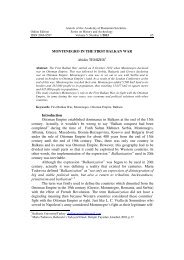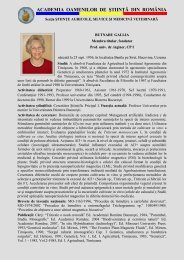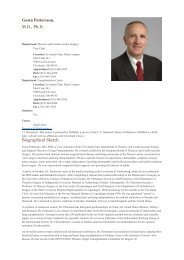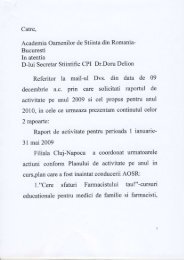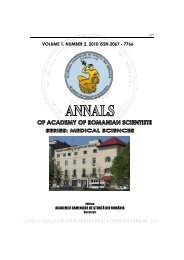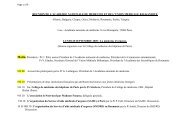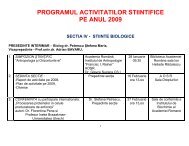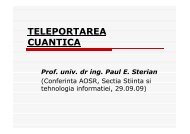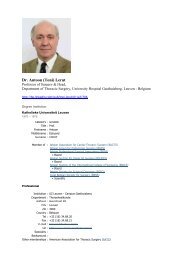Volume 3 nr 1 / 2011 - Academia Oamenilor de Stiinta din Romania
Volume 3 nr 1 / 2011 - Academia Oamenilor de Stiinta din Romania
Volume 3 nr 1 / 2011 - Academia Oamenilor de Stiinta din Romania
- No tags were found...
You also want an ePaper? Increase the reach of your titles
YUMPU automatically turns print PDFs into web optimized ePapers that Google loves.
110 Liviu Muresan, Septimiu Caceunecessarily requires restrictive information circulation, the national database mustbe <strong>de</strong>signed and managed accor<strong>din</strong>g to the national legislation, as well as theregulations and obligations that are incumbent on <strong>Romania</strong> as an EU and NATOmember.Lastly, but at the same time first, critical infrastructures and the need for theirprotection are key issues that must be inclu<strong>de</strong>d in strategies of national security,energy security, information security, food supply security, health security,transportation security, et al.A coherent national strategy of critical infrastructures, integrated into thenetwork of the above-mentioned strategies, is a <strong>de</strong>termining factor for a nation’sresilience capability.Recent international security evolutions have shown a period of relatively highinstability, probably followed by a period of instability “stabilization”.In this context, we consi<strong>de</strong>r that several issues such as critical infrastructures, theirprotection and resilience could contribute to security and stability. If we comparea critical infrastructure system with an articulate concrete block (used for riverbank stabilization), several articulate concrete blocks can be seen as a system ofsystems that could break the current “instability waves”.Given the latest critical sectors evolutions and the increasing level ofglobalization, we could consi<strong>de</strong>r a new concept of successful critical infrastructuregovernance, with good prospects of national, European and internationalimplementation.3. Critical Infrastructure Protection – the Approach at European andEuro-Atlantic LevelAs natural disasters increase in amplitu<strong>de</strong> and frequency, and as the terroristphenomenon has an unprece<strong>de</strong>nted scope, critical infrastructures require enhancedprotection from threats and risks.Because of that, governments worldwi<strong>de</strong> show special concern for ensuring thesecurity of the population and of the state authority.In this sense, a first phase of the approach was to evaluate the vulnerabilities andthe impact on society in case of infrastructure and services dysfunction.In the last years, numerous states took robust actions in view of establishing acommon language and way of action for the protection of objectives consi<strong>de</strong>red tobe critical infrastructures.The European states have generally inclu<strong>de</strong>d in the critical objectives category:telecommunications, water and energy sources, the distribution networks, theCopyright © Editura Aca<strong>de</strong>miei <strong>Oamenilor</strong> <strong>de</strong> Știință <strong>din</strong> România, <strong>2011</strong>Watermark Protected



